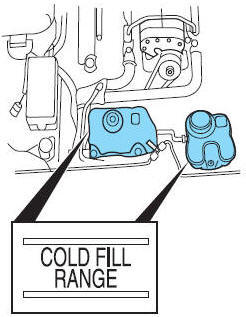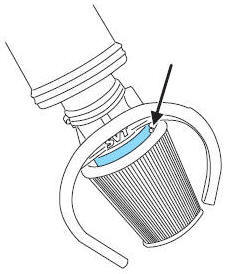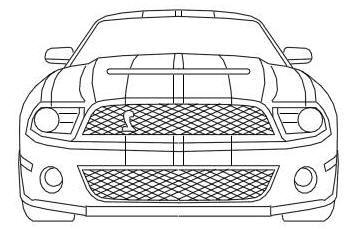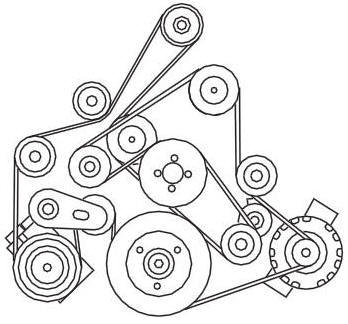 |
|
The Manual On How To Take Care of A Shelby Mustang In 3 Clicks
Scheduled Maintenance
- Every 7500 Miles (12000 KM) or 6 Months (whichever comes first)
- 15000 Miles (24000 KM) or 12 Months (whichever comes first)
- Every 22500 Miles (36000 KM) or 18 Months (whichever comes first)
- Every 30000 Miles (48000 KM) or 24 Months (whichever comes first)
- Every 37500 Miles (60000 KM) or 30 Months (whichever comes first)
- Every 45000 Miles (72000 KM) or 36 Months (whichever comes first)
- Every 52500 Miles (84000 KM) or 42 Months (whichever comes first)
- Every 60000 Miles (96000 KM) or 48 Months (whichever comes first)
- Every 67500 Miles (108000 KM) or 54 Months (whichever comes first)
- Every 75000 Miles (120000 KM) or 60 Months (whichever comes first)
- Every 82500 Miles (132000 KM) or 66 Months (whichever comes first)
- Every 90000 Miles (144000 KM) or 72 Months (whichever comes first)
- 6 years or 105,000 miles (168,000 km) whichever comes first
- Every 97500 Miles (156000 KM) or 78 Months (whichever comes first)
- Every 105000 Miles (168000 KM) or 84 Months (whichever comes first)
- Every 112500 Miles (180000 KM) or 90 Months (whichever comes first)
- Every 120000 Miles (192000 KM) or 96 Months (whichever comes first)
- Every 127500 Miles (204000 KM) or 102 Months (whichever comes first)
- Every 135000 Miles (216000 KM) or 108 Months (whichever comes first)
- Every 142500 Miles (228000 KM) or 114 Months (whichever comes first)
- Every 150000 Miles (240000 KM) or 120 Months (whichever comes first)
Ford Motor Company recommends against the use of additive products unless specifically recommended by Ford for a particular application.
Fluid discoloration is a normal operating characteristic and, by itself, does not necessarily indicate a concern or that the fluid needs to be changed.
However, discolored fluids that also show signs of overheating and/or foreign material contamination should be inspected immediately by a qualified expert such as the factory-trained technicians.
Your vehicle’s oils and fluids should be changed at the specified intervals or in conjunction with a repair. Flushing is a viable way to change fluid for many vehicle sub-systems during scheduled maintenance.
It is critical that systems are flushed only with new fluid that is the same as that required to fill and operate the system, or using a Ford-approved flushing chemical.
Certain basic maintenance checks and inspections should be performed by the owner or a service technician at the intervals indicated. Service information and supporting specifications are provided in this owner’s guide.
Any adverse condition should be brought to the attention of your dealer or qualified service technician as soon as possible for the proper service advice.
Every 7500 Miles (12000 KM) or 6 Months (whichever comes first)
Every 15000 Miles (24000 KM) or 12 Months (whichever comes first)
Every 22500 Miles (36000 KM) or 18 Months (whichever comes first)
Every 30000 Miles (48000 KM) or 24 Months (whichever comes first)
Every 37500 Miles (60000 KM) or 30 Months (whichever comes first)
Every 45000 Miles (72000 KM) or 36 Months (whichever comes first)
After initial Engine Coolant Change - 3 years or 45,000 miles (72,000 km) whichever comes first
Every 52500 Miles (84000 KM) or 42 Months (whichever comes first)
Every 60000 Miles (96000 KM) or 48 Months (whichever comes first)
Every 67500 Miles (108000 KM) or 54 Months (whichever comes first)
Every 75000 Miles (120000 KM) or 60 Months (whichever comes first)
Every 82500 Miles (132000 KM) or 66 Months (whichever comes first)
Every 90000 Miles (144000 KM) or 72 Months (whichever comes first)
6 years or 105,000 miles (168,000 km) whichever comes first
Every 97500 Miles (156000 KM) or 78 Months (whichever comes first)
Every 105000 Miles (168000 KM) or 84 Months (whichever comes first)
Every 112500 Miles (180000 KM) or 90 Months (whichever comes first)
Every 120000 Miles (192000 KM) or 96 Months (whichever comes first)
Every 127500 Miles (204000 KM) or 102 Months (whichever comes first)
Every 135000 Miles (216000 KM) or 108 Months (whichever comes first)
Every 142500 Miles (228000 KM) or 114 Months (whichever comes first)
Every 150000 Miles (240000 KM) or 120 Months (whichever comes first)
Use SAE 5W-50 full synthetic or an equivalent SAE 5W-50 full synthetic oil
-
Must meet Ford specification WSS-M2C931-B.
Do not use;
-
supplemental engine oil additives,
-
cleaners or
-
other engine treatments.
Change your engine oil and filter according to the appropriate schedule listed in the scheduled maintenance information.
ENGINE AND INTERCOOLER COOLANT
Check concentration and level of coolant at the mileage intervals listed in the scheduled maintenance information.
Coolant concentration should be
-
maintained at 50/50 coolant and water,
-
equates to a freeze point of -34°F (-36°C)
-
Coolant concentration testing
-
Use a hydrometer or antifreeze tester
-
(i.e. the Rotunda Battery and Antifreeze Tester, 0014–R1060).
-
-
The level of coolant should be maintained
-
at the “cold fill range” level in the coolant reservoir.
-
-
If the level falls below,
-
add coolant per the instructions in the
-
The Shelby Mustang is factory-filled with a 50/50 coolant and water concentration.
Engine parts could become damaged or not work properly if the concentration of coolant
-
falls below 40% or
-
is above 60%
A 50/50 mixture of coolant and water provides the following:
-
freeze protection down to -34°F (-36°C).
-
boiling protection up to 265°F (129°C).
-
protection against rust and other forms of corrosion.
-
an accurate temperature readout from the engine coolant gauge.
Check the level of the engine coolant in the reservoir.
-
When the engine is cold
Fill your engine coolant reservoir as outlined in
Adding engine coolant
-
The coolant should be at the “cold fill range” as listed on the engine coolant reservoir and intercooler coolant reservoir.
-
To find out how much fluid your vehicle’s cooling system can hold, refer to
-
Refer to the scheduled maintenance information for service interval schedules.
Be sure to read and understand Precautions when servicing your vehicle in your Owner’s Guide.
If the reservoir is low or empty, add coolant to the reservoir. Refer to Adding coolant
Note: Automotive fluids are not interchangeable; do not use engine coolant/antifreeze or windshield washer fluid outside of its specified function and vehicle location.
-
For more information about engine coolant, see the
Maintenance
and Specifications
When adding coolant,
-
make sure it is a 50/50 mixture of coolant and distilled water.
-
Add the mixture to the coolant reservoir,
WARNING: Do not add coolant when the engine is hot. Steam and scalding liquids released from a hot cooling system can burn you badly. Also, you can be burned if you spill coolant on hot engine parts.
WARNING: Do not put coolant in the windshield washer fluid container. If sprayed on the windshield, coolant could make it difficult to see through the windshield.
DO NOT
-
MIX different colors or types of coolant in your vehicle.
-
MIX recycled coolant and conventional coolant together in the vehicle.
-
USE stop leak pellets or cooling system sealants/additives
-
Use alcohol, methanol or brine or any engine coolants mixed with alcohol or methanol antifreeze (coolant)
- Add extra inhibitors or additives to the coolant
Refer to Maintenance product specifications and capacities in this chapter.
A large amount of water without coolant may be added, in case of emergency. In this instance, the cooling system must be
-
drained and
-
refilled with a 50/50 mixture of coolant and distilled water
-
as soon as possible.
Water alone (without coolant) can cause engine damage from corrosion, overheating or freezing.
WARNING: Make sure the engine is cool before unscrewing the coolant pressure relief cap.
The cooling system is under pressure; steam and hot liquid can come
out forcefully when the cap is loosened slightly.
If you must remove the pressure relief cap or radiator cap (depending upon engine application), follow these steps to avoid personal injury:
1. Before you remove the cap, turn the engine off and let it cool.
2. When the engine is cool, wrap a thick cloth around the cap. Slowly turn cap counterclockwise until pressure begins to release.
3. Step back while the pressure releases.
4. When you are sure that all the pressure has been released, use the cloth to turn it counterclockwise and remove the cap.
Coolant and intercooler refill procedure
This procedure should be used when refilling the cooling system.
1. Remove the pressure relief cap from the coolant reservoir
2. Slowly add a
50/50 mixture of coolant and distilled water to the coolant reservoir until the coolant level is at the “cold fill level.”3. Reinstall the pressure relief cap.
4. Start and idle the engine until the upper radiator hose is warm (this indicates the thermostat is open and coolant is flowing through the entire system).
5. Shut the engine off and let it cool.
6. Remove the pressure relief cap from the coolant reservoir.
7. Add a
50/50 mixture of coolant and distilled water to the coolant reservoir until the coolant level is at the “cold fill range.”8. Reinstall the pressure relief cap.
9. Check the coolant level in the reservoir before you drive your vehicle the next few times (with the engine cool).
10. If necessary, add a
50/50 mixture of coolant and distilled water to the coolant reservoir until the coolant level is at the “cold fill range.”After any coolant has been added, check the coolant concentration (refer to the Maintenance and Specifications chapter of your Owner’s Guide).
If the concentration is not 50/50 (protection to –34°F/–36°C), drain some coolant and adjust the concentration. It may take several drains and additions to obtain a 50/50 coolant concentration.Whenever coolant has been added, the coolant level in the coolant reservoir should be checked the next few times you drive the vehicle. If necessary, add enough 50/50 concentration of coolant and distilled water to bring the liquid level to the proper level.
If you have to add more than 1.0 quart (1.0 liter) of coolant per month, have your dealer check the cooling system. Your cooling system may have a leak. Operating an engine with a low level of coolant can result in engine overheating and possible engine damage.
To keep your high performance engine operating at peak performance, the spark plug service interval is every 45,000 miles (72,000 km). Reference the Motorcraft
Part Numbers chart for the specific spark plug application.Your vehicle is designed to use “Premium” unleaded gasoline only, with an (R+M)/2 octane rating of 91 or higher. SVT recommends using unleaded gasoline with octane rating of 93 or higher for optimal performance of this vehicle. Recommended fuel is an important part of the proper maintenance and optimal performance of this vehicle. The use of gasoline with an octane rating lower than 91 can lead to severe mechanical damage to your vehicle, may degrade vehicle performance, and may affect your warranty coverage. Please see the Warranty Guide for complete information.
SVT does not recommend the use of gasoline labeled as
Premium with octane ratings of less than 91.Refer to scheduled maintenance information
for the appropriate intervals for changing the air filter element. When changing the air filter element, use only the Motorcraft air filter element listed. Refer to Motorcraft part numbers .WARNING: To reduce the risk of vehicle damage and/or personal burn injuries do not start your engine with the air cleaner removed and do not remove it while the engine is running.
Changing the air filter element
1. Loosen the air filter clamp bolt enough to allow the air filter to slip off the air filter housing easily.
2. Slip the air filter off from the air filter housing.
3. Wipe the air filter housing clean to remove any dirt or debris.
4. Install the new air filter taking care not to damage the air filter element. Align tab on closed end of filter with notch in air filter housing.
5. Tighten the air filter clamp bolt.

| Component | 5.4L DOHC Supercharged V8 engine |
| Air filter element | FA-1896 |
| Fuel filter | FG-1083 |
| Battery | BXT-40-R |
| Oil filter | FL-820S |
| Spark plugs* | AGSF-22FM1 |
* Refer to Vehicle Emissions Control Information (VECI) decal for spark plug gap information.
Maintenance Specifications and Capacities
| PART | Capacity | Ford Part Name or Equivilant | Ford Part Number / Ford Specification |
| Brake Fluid | Between Min and Max line on reservoir | Motorcraft High Performance / DOT3 Motor Vehicle Brake Fluid | PM-1-C/ WSS-M6062-A or WSS-M6O65-A1 |
| Engine Oil with oil filter change | 6.5 Quarts / 6.1 L | Motorcraft 5W-50 Full Synthetic Motor Oil | X0-5W50-QGT / WSS-M2C931-b |
| Engine Coolant | 21.1 Quarts / 20.0 L | Motorcraft Specialty Orange Engine Coolant with bittering agent (US) / Motorcraft Specialty Orange Engine Coolant (Canada) | VC-3-B (US) CVC-3-B (Canada) / WSS-M97B44-D |
| Intercooler Coolant *1 | 4.17 Quarts (3.95L) See authorized Mechanic | XY-75W140-QL / WSL-M2C192-A | |
| Rear Axle Lubricant *2 | 4.25 Pints (2.0L) | Motorcraft SAE 75W-140 High Performance Synthetic Rear Axle Lubricant | XY-75W140-QL / WSL-M2c192-A |
| Fuel Tank | 16.0 Gallons (60.5 L) | 91 Octane or Better | 91 Octane or Better |
| Transmission Fluid *3 | 6.35 Pints (3.5L) *4 | Motorcraft MERCON V ATF | XT-5-QM / MERCON V |
| Windshield Washer Fluid | 4.0 Quarts (3.8L) | Motorcraft Premium Windshield Washer Concentrate (US) / Premium Quality Windshield Washer Fluid (Canada) | ZC-32-A (US) CXC-37-(A,B,D, and F) Canada) / WSB-M8B16-A2 |
*1 Add coolant type originally equipped in your in your vehicle.
*2 Rear axle lubricants do not need to be checked unless a leak is suspected, service is required, or the axle assembly has been submerged in water. The axle lubricant should be changed any time the rear axle has been submerged in water.
Fill 1/4 - 9/16 inches, (6-14 mm) below bottom of fill hole.
*3 The Tremec TR-6060 6-Speed manual transmission on the Shelby GT500 uses MERCON V automatic transmission fluid. Ensure that the correct MERCON V ATF automatic transmission fluid is used as indicated on the label on the transmission.
*4 Service refill capacity is determined by filling the transmission to the bottom of the filler hole with the vehicle on a level surface.
| Function |
Trade Number |
| Park lamp, turn lamp, side marker (front) | 3156K |
| Luggage compartment lamp | S211 |
| Fog lamp | PS24N |

| Part | Description | |
| Rear Axle | 8.8 inch solid rear axle with limited-slip differential 3.55:1 ratio | |
| Driveshaft | 2 piece alluminum | |
| Transmission | Tremec TR-6060 6-speed manual with integral clutch housing | |
| Gear Ratios | Gear | Ratio |
| 1st | 2.98 | |
| 2nd | 1.78 | |
| 3rd | 1.3 | |
| 4th | 1.0 | |
| 5th | .74 | |
| 6th | .50 | |
| Reverse | 2.9 | |
| Part | Description |
| Configuration | Longitudinally mounted, 90 degree V8, cast aluminum cylinder block and cylinder heads |
| Bore & Stroke | 3.55 by 4.165 inches (90.2 by 105.8mm) |
| Displacement | 330 CID - 5410 cc |
| Compression Ratio | 8.4:1 |
| Horsepower | 550 horsepower @ 6200 RPM |
| Torque | 510 lb-ft @ 4250 RPM |
| Redline | 6250 RPM fuel shut-off |
| Specific Output | 100 HP per Liter |
| Valvuetrain | Dual Overhead Chain-Driven Cams, roller finger followers with hydraulic lash adjustments, ovate-wire valve springs, four per cylinder |
| Fuel System | sequential electronic fuel injection |
| Mass Air Sensor | 4.13 inches (105 mm) Circle |
| Throttle Body | Twin ( 2.36 inch (60 mm) diameter bore - simultaneously open |
| Pistons | Aluminum Forged |
| Crankshaft | Forged Steel |
| Connecting Rods | Forged Steel I-Beams |
| Supercharger | Eaton Model 122, Roots-type |
| Exhaust Manifold | Cast high-silicon, molybdenum iron |
| Exhaust System | Dual Stainless Steel |
5.4L DOHC 32V Supercharged V-8
